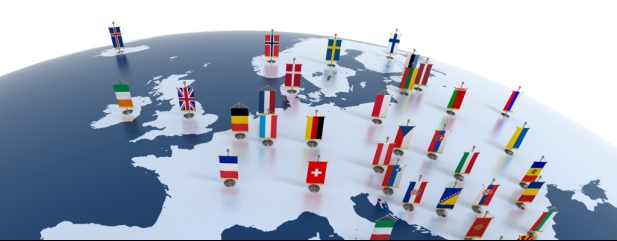Archived article
Please note that tax, investment, pension and ISA rules can change and the information and any views contained in this article may now be inaccurate.
Can European shares finally shrug off their ‘value’ tag?

As we have observed many times, when global investors look at Europe they tend to think ‘value’ rather than ‘growth’ due to the heavy weighting of somnolent sectors like financials, commodities and utilities and the lack of exciting technology companies.
Admittedly, that perception is changing thanks to the clear growth potential of firms like Dutch semiconductor equipment maker ASML (ASML:AMS) and Danish drug maker Novo Nordisk (NOVO-B:CPH), both long-term favourites here at Shares.
Strategists at Morgan Stanley now argue there is ‘ample scope’ for Europe’s price to earnings ratio to rerate going forward due to a secular shift to higher and more stable profit growth, which will be music to the ears of investors in the ‘old continent’.
HIDDEN IN PLAIN VIEW
Over the last decade or more there has been a slow transition in the composition of the European market in terms of market cap, with the weighting of financial and commodity stocks falling from 45% in 2010 to around 30% today.
This is partly due to a derating of these two sectors, meaning investors are no longer prepared to pay the multiples they might have done previously, and partly to a rerating of higher-growth sectors such as consumer discretionary, industrials and health care.
That shift has been less obvious for the last two years due to the rotation into ‘value’ stocks in general. This lifted all boats and in fairness means Europe has been one of the best-performing areas but the Morgan Stanley team believe this is more of ‘a pause in the evolution of the European market rather than a reversal’.
STILL SEEN AS THE ‘VALUE’ TRADE
The figures in the table are impressive, with health care and industrial stocks increasing their market weight by 50% or more, while the weighting in technology has risen by around 150%.
Despite this progress, however, ‘there is little sign that Europe’s sector transition has benefited from a valuation perspective,’ say the team, citing the area’s lowly rating compared with the MSCI All-Countries World Index (ACWI).
The performance of European markets compared with MSCI ACWI bears a remarkable resemblance to the performance of the MSCI World Value index versus the Growth Index, underlining the impression that Europe is a proxy for international value.

This may in part be because, while their market share may have increased, the contribution to overall earnings from sectors like consumer discretionary, health care and industrials hasn’t kept pace with prices.
At the same time there has been a large recovery in profitability in financial and commodity stocks in the last couple of years, which has lifted overall earnings for the region to a record high.
Based on trailing 12-month data, financials still make up nearly 25% of European earnings while energy, materials and utilities make up close to 30%, meaning Europe is still reliant on ‘old economy’ sectors as the analysts put it.
In addition, while the weight of technology stocks has increased significantly, the sector is still disproportionately small compared to countries like the US, Japan and other Asian nations.
REASONS TO BE HOPEFUL
Despite these challenges, Morgan Stanley believes the shift in sector weightings ‘points to a higher and less volatile profitability dynamic’ which in turn should feed through into higher multiples for Europe as a region.
One way to illustrate this is to compare the 10 largest stocks in MSCI Europe today to those from 2010.
Today’s stocks have higher ROEs (returns on equity) and gross margins than their 2010 counterparts and have grown their earnings much faster than the index over the last decade – on average by 6.1% against 0.6% for the benchmark – even though the absolute growth rate is lower than that posted by the 2010 cohort (9% versus 11% for the benchmark).
What’s more, and this is a crucial plank of the analysts’ argument, today’s top 10 have grown their earnings with much lower volatility than their predecessors, even allowing for the market upheaval caused by the pandemic and the invasion of Ukraine.
That means investors have greater visibility, and therefore can have greater confidence in future returns, which in turn should translate into a higher rating as history shows there is a valuation premium for companies which have high but stable margins as well as strong earnings growth.
‘Over time, Europe’s sectoral transition towards a higher growth and lower volatility mix should justify a higher equity valuation on average than we have seen historically,’ conclude the Morgan Stanley team.
Important information:
These articles are provided by Shares magazine which is published by AJ Bell Media, a part of AJ Bell. Shares is not written by AJ Bell.
Shares is provided for your general information and use and is not a personal recommendation to invest. It is not intended to be relied upon by you in making or not making any investment decisions. The investments referred to in these articles will not be suitable for all investors. If in doubt please seek appropriate independent financial advice.
Investors acting on the information in these articles do so at their own risk and AJ Bell Media and its staff do not accept liability for losses suffered by investors as a result of their investment decisions.
Issue contents
Feature
Great Ideas
News
- Analyst forecasts big increase in profits at Entain and Flutter Entertainment
- Novo Nordisk shares continue to soar on strong demand for its weight-loss drugs
- Risk appetite returns after softer US jobs data signals rate pause
- Experts rate shares in housebuilders as good value despite property price shock
- Walgreens’ shares droop as CEO Brewer steps down

 magazine
magazine








